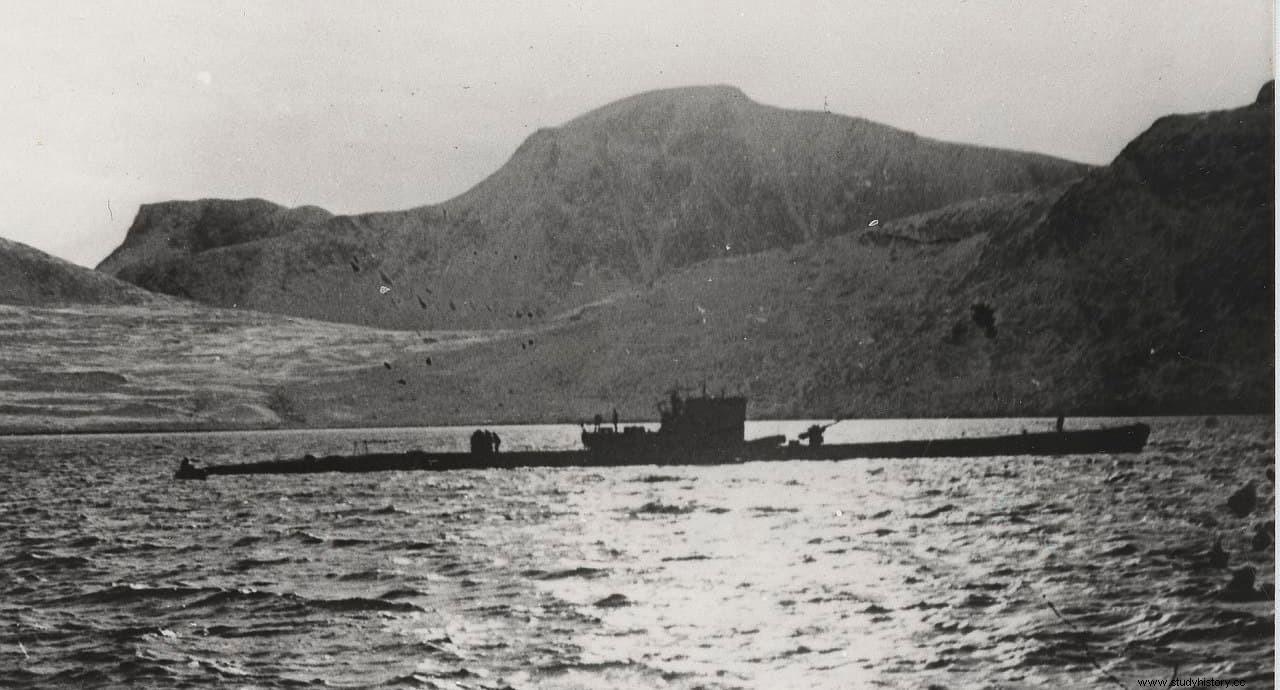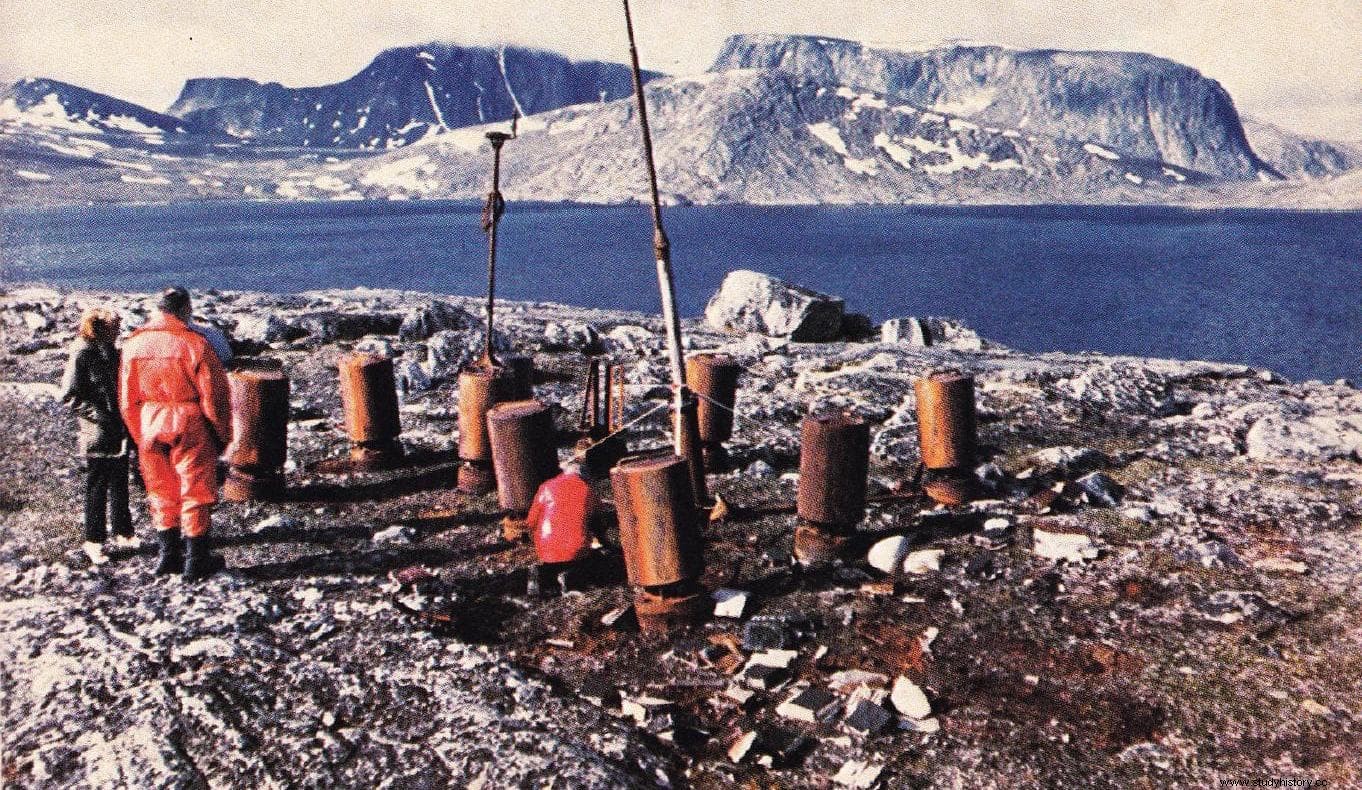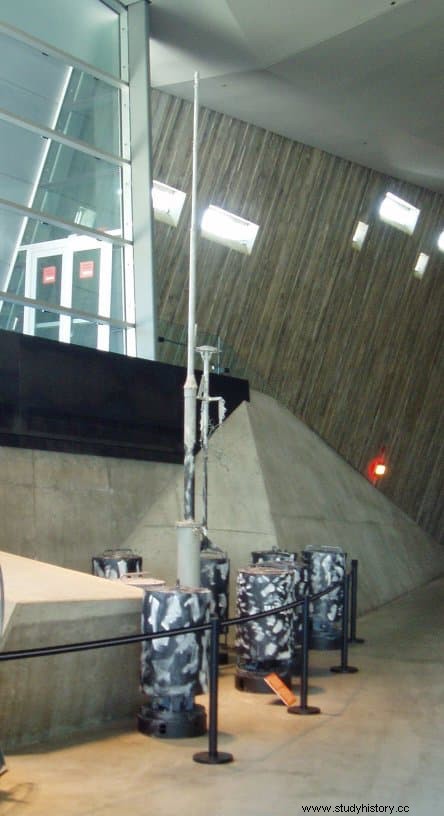World War II was not only a battle for resources and territory, it was also a war in which information played a very important role, with all parties to the conflict involved in intelligence and counter-intelligence operations.
One of the most important aspects was the weather forecast , something that could determine the conditions of naval and air operations, either as a means of concealment of convoys or visibility for bombing.
The allies had a certain advantage in this regard, with a wide network of weather stations deployed in North America, Greenland and Iceland during the first years of the war, which allowed them to make forecasts with a much higher accuracy than the Germans.

So the Germans used specially modified aircraft, ships, and submarines to collect weather information that they could not otherwise obtain. However, these missions in the North Atlantic turned out to be dangerous and unprofitable, with numerous ships and submarines discovered and sunk by the allies. They soon realized that they needed a way to obtain the same amount of information as their enemies, but there was a problem, for this they had to have stations installed on US soil .
The Siemens company was in charge of developing a meteorological station that could send data automatically every three hours, through radio waves. They called it Wetter-Funkgerät Land (WFL) and up to 26 units were built. Fourteen of them were placed in arctic and subarctic regions, including Greenland . Another five were located on the shores of the Barents Sea. And two more were destined for no less than North America.
All of them were equipped with specialized measurement systems, with two masts that included an anemometer and a telemetry device, powered by rechargeable nickel-cadmium batteries that lasted up to six months.

Only one of the North American stations could be correctly installed. To do this they used the submarine U-537, under the command of Captain Peter Schrewe and with two meteorologists on board in charge of setting up the station. The trip was certainly eventful, including hitting an iceberg that caused him to lose his anti-aircraft gun and a leak in his hull, which made it impossible for him to submerge.
On October 22, 1943, she arrived in such conditions on the north coast of Labrador, Canada, anchoring in Martin Bay. After exploring the coast and verifying that there were no Inuit settlements, they proceeded to install the weather station on the Hutton Peninsula, transporting the pieces on inflatable rafts from the deck of the submarine.

The station bore the logo of a fictitious company, the non-existent Canadian Weather Service. To make it more credible, they left empty American cigarette packs around it, at least to confuse the civilian population who might come across the device. The chosen place was actually part of the Dominion of Newfoundland, which would not become part of Canada until 1949.
28 hours later the U-537 undertook the return home. At the height of the Grand Bank of Newfoundland they met a patrol boat and several Canadian fighter planes, which made three attacks on the submarine, without sinking it. On December 8, after 70 days at sea, U-537 was back in the port of Lorient, France. Her final destination found him in the Dutch East Indies, where she was sunk by the American USS Flounder.
But the weather station had better luck. Throughout the war it sent information to the Germans until, at the end of the conflict, it was abandoned. In 1977 geomorphologist Peter Johnson was conducting research near Martin Bay when he came across the artifact. Thinking that it must be a Canadian military post, he did not give it much importance.
Around the same time, a retired Siemens engineer named Franz Selinger, who was writing a history of the company, discovered documents revealing the existence of the secret weather station and notified the Canadian government.
Its official discovery occurred in 1981 , exactly in the same place where the Germans had left it. She was disassembled and transferred to the War Museum in Ottawa, where she can be seen today.
